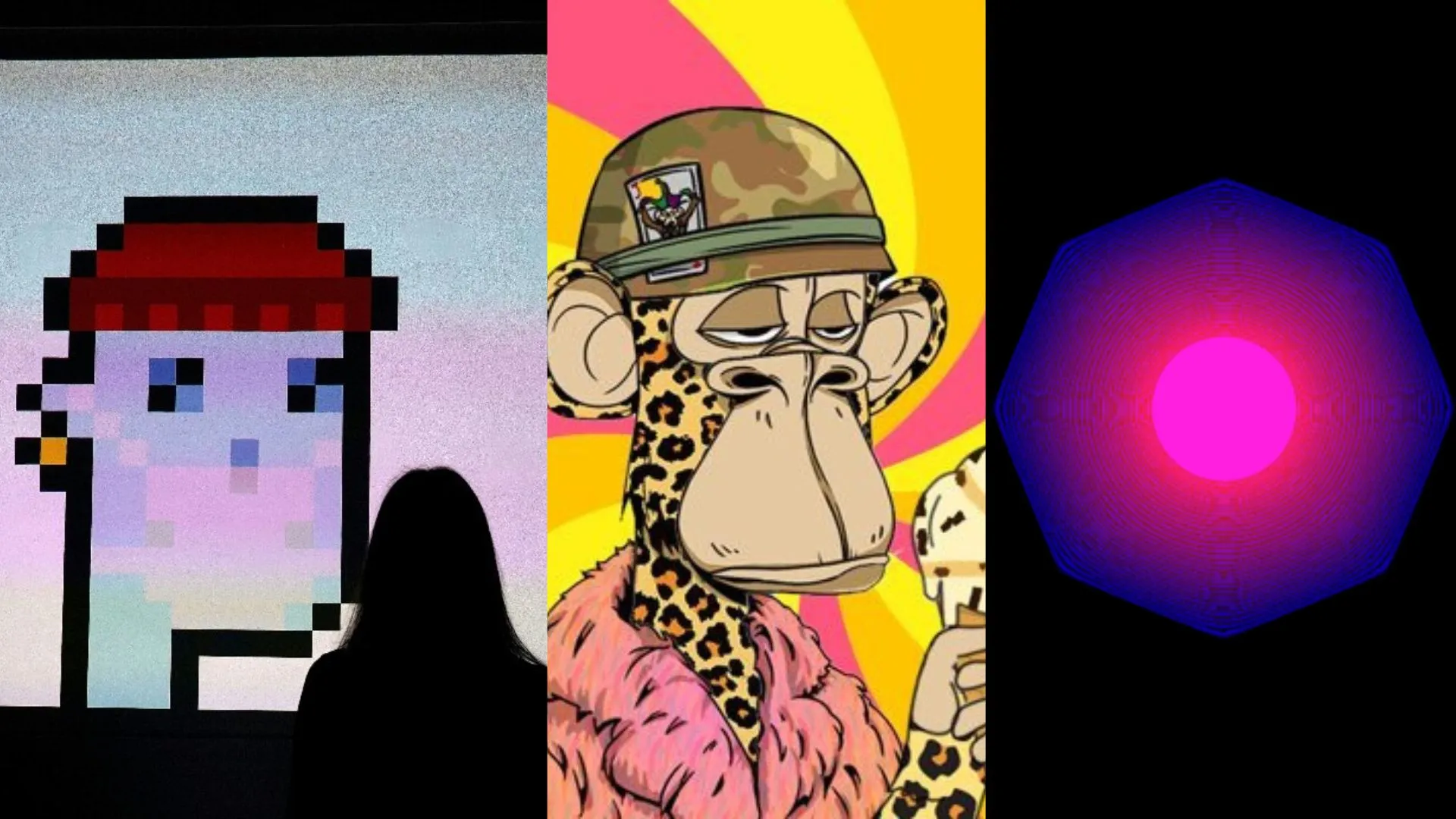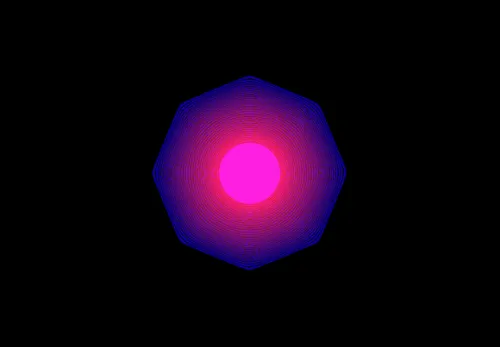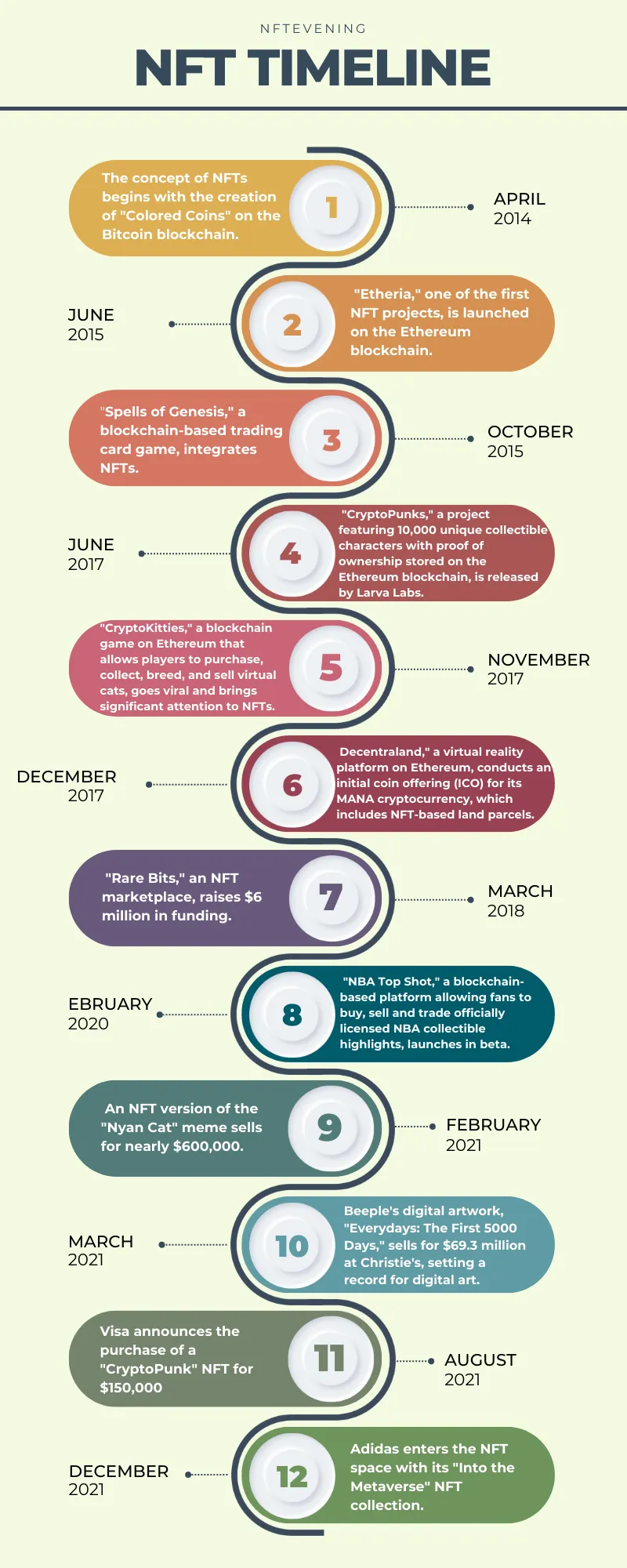Let’s stroll on a captivating journey into the world of Non-Fungible Tokens (NFTs). These unique digital assets have revolutionized how we think about ownership, art, and digital identity in the blockchain era. Let’s dive into the intriguing story of NFTs, where each token is a one-of-a-kind digital fingerprint, also immortalizing its existence on the blockchain.

What Are NFTs?
An NFT, or Non-Fungible Token, is a unique digital asset recorded on a blockchain. Unlike cryptocurrencies like Bitcoin, which are fungible and can be exchanged one for another, NFTs are distinct and cannot be swapped on a one-for-one basis, similar to how original artworks or rare trading cards like a “rare holographic Charizard” can’t be equated with common ones.
Each NFT has a unique identity and characteristics, hence making it non-fungible. This uniqueness is crucial for establishing ownership and property rights in the digital realm. NFTs record the original item’s ownership, creator information, and resale royalties permanently on the blockchain. This further ensures uniqueness despite digital file copies. This ensures the authentic original has only one owner. You can deep-dive into the technicalities of NFTs on our extensive NFT 101 guide!
What Is The First NFT In History?
The first NFT in history is a topic shrouded in a bit of mystery and debate. However, the consensus points to “Quantum” as the pioneer. Created in 2014 by Kevin McCoy and Anil Dash, “Quantum” was a groundbreaking piece, far ahead of its time. It’s a mesmerizing octagon filled with hypnotic, pulsating colors, a digital artwork representing a significant milestone in blockchain history.
Kevin McCoy, a visionary digital artist, teamed up with Anil Dash, a technology thought leader, to create this unique piece. They used the blockchain to address a fundamental problem in the digital art world. This was the problem of how to establish and prove ownership of a digital creation that can be easily copied. Their solution? Embedding the artwork’s ownership into a blockchain, an immutable ledger. This pioneering step not only gave birth to the first NFT but also laid the groundwork for the entire NFT ecosystem that we witness flourishing today.

Building On The Blockchain: How New Art Is Born
Their foresight was remarkable. At a time when blockchain technology was still in its infancy and primarily associated with cryptocurrencies like Bitcoin, McCoy and Dash saw its potential for digital art. They recognized the power of blockchain in proving the provenance and ownership of digital assets, a concept that has now become a cornerstone of the digital art world.
“Quantum” wasn’t just a digital artwork; it was a statement, a prototype of what was to come. It demonstrated the possibilities of blockchain beyond just financial transactions, opening a new frontier for artists and creators worldwide. The creation of this new era allowed for the collection, trade, and unprecedented appreciation of digital art.
In essence, Kevin McCoy and Anil Dash didn’t just create the first NFT; they sparked a digital revolution. Their work paved the way for a new understanding of value and ownership in the digital age. It set the stage for the vibrant, diverse NFT landscape we see today. Their vision and innovation continue to inspire artists and technologists, proving that sometimes, the most significant revolutions start with a single, groundbreaking idea.
NFT Timeline Explained
The Rise of NFTs
NFTs, once an obscure concept understood by only a few, have surged into the limelight, capturing the imagination of artists, collectors, and investors alike. A blend of technological advancement and growing appreciation for digital art and collectibles has driven this rise.
In the early days of NFTs, a small but passionate community marked the scene. Artists and creators saw an opportunity to monetize their digital work in ways that were not possible before, thanks to blockchain technology. Furthermore, as the concept of digital ownership became more understood and accepted, these digital collectibles started to gain traction.
Then came the boom. Driven by high-profile sales and media coverage, NFTs quickly transitioned from a niche interest to a global phenomenon. Factors like the Ethereum blockchain’s development, which made creating and trading NFTs easier, played a crucial role. The rise of virtual worlds and gaming also contributed, as these platforms provided a natural environment for these collectibles to thrive.
But what truly catapulted NFTs into the mainstream was the blend of exclusivity, community, and the human desire to collect and own unique items. The digital age had found its collectible, and the world was ready to embrace it.

Chronological Timeline of Popular NFTs
- 2017 – CryptoPunks: Launched by Larva Labs, CryptoPunks are 10,000 uniquely generated characters. Each Punk became a digital collectible, marking one of the first instances of “profile-picture” NFTs gaining popularity.
- 2018 – CryptoKitties: A blockchain-based game where players breed and trade virtual cats. Its popularity congested the Ethereum network and highlighted NFTs’ potential in gaming.
- 2019 – Decentraland: A virtual world where land and items are NFTs. This platform also expanded the concept of digital assets into virtual real estate and immersive experiences.
- 2020 – Beeple’s Everydays: The first 5,000 days, a digital artwork by Beeple (Mike Winkelmann), sold for a staggering $69 million at Christie’s. This sale shattered records and brought unprecedented attention to NFTs.
- 2021 – Bored Ape Yacht Club (BAYC): A collection of 10,000 unique bored ape jpegs that gained massive popularity. Owning a Bored Ape not only meant owning a piece of digital art but also membership in an exclusive club with benefits.
- 2022 – Art Blocks: This platform introduced generative art to the NFT space, where algorithms create unique pieces of art upon purchase.
- 2023 – Virtual Fashion NFTs: Luxury fashion brands started releasing NFTs, merging the physical and digital fashion worlds and showing their potential in new industries.
This timeline is a testament to the dynamic and evolving nature of this industry. From pixelated punks to virtual real estate and beyond, they have grown into a multi-faceted phenomenon.
Each milestone reflects not just a change in the types of NFTs popular at the time, but also a deeper integration into our digital and cultural lives.
As we move forward, the only certainty is that the world of NFTs will continue to surprise and innovate. This industry also redefining the boundaries of art, ownership, and community in the digital age.
Future Of NFTs: 2023 & Beyond
In the ever-evolving world of blockchain and digital assets, they also stand out as a beacon of innovation and disruption. As we step into 2023 and look beyond, NFTs continue to break new ground. The industry reshapes the landscape of digital ownership, art, and even identity.
The journey of NFTs is nothing short of a rollercoaster. This is marked by astonishing highs and thought-provoking developments. And (sometimes) the lowest of the lows and capitulation. In this exploration, we delve into the trends and predictions shaping the future of NFTs.
From regulatory landscapes to the emergence of new use cases, the mainstreaming of NFTs, and technological advancements, the road ahead is as intriguing as it is uncertain. Let’s take a closer look at what the future may hold for this fascinating facet of the digital world.
-
Building Trust and Ethical Standards
- In the dynamic landscape of NFTs, trust is emerging as a new cornerstone. As digital assets continue to proliferate, companies are focusing on enhancing transparency and ethical standards. This effort extends beyond individual processes to encompass entire organizations, shaping a culture rooted in transparency. This shift towards trustworthy and ethically grounded practices is expected to grow stronger, building a foundation of reliability for customers, investors, and regulators alike.
-
Regulatory Landscape and Its Impacts
- Regulation is a hot topic in the crypto market. The burgeoning attention from governmental and regulatory bodies, especially concerning taxation, is poised to reshape the NFT marketplace. The IRS’s decision to tax NFTs similarly to cryptocurrencies, for instance, signifies the beginning of more structured regulatory oversight. Such developments might safeguard the market from malpractices, attracting cautious investors, but they also risk complicating transactions and potentially stifling smaller artists and creators.
-
New Use Cases and Market Expansion
- The horizon for NFTs is expanding with the emergence of ‘utility NFTs’ which go beyond art and collectibles. Think virtual real estate, in-game items, and even digital identity and credentials. These new applications are not only diversifying NFTs’ usage but also spurring the growth of existing marketplaces and the creation of new ones, tailored to a variety of assets and buyers. This expansion is a clear indicator of NFTs’ versatility and adaptability.
-
Evolution of NFT Marketplaces
- NFT marketplaces are evolving rapidly, moving beyond their traditional confines of art and collectibles. We’re witnessing a growth in sectors like gaming, sports, fashion, and music. Additionally, the application of AI in generating art raises new questions about ethics and authorship, marking a significant transition in how NFTs are perceived and utilized. This evolution signifies a broadening of the NFT ecosystem, making it more inclusive and varied.
-
Mainstream Adoption and Industry Crossovers
- NFTs are making significant inroads into mainstream industries. Major players like Amazon are reportedly planning to enter the NFT marketplace. This signals a shift from more traditional transaction methods like credit card payments. This move is likely to encourage other major brands to explore NFTs. Furthermore, this may potentially lead to the integration of NFTs in more loyalty programs, brand merchandise, and even intellectual property protection.
-
Cross-Chain Interoperability
- A critical trend shaping the future of NFTs is the push towards cross-chain interoperability. The current limitation of not being able to trade collectibles across different blockchain networks is a significant barrier. However, with advancements in cross-chain bridges, sidechains, and interoperability protocols, this barrier is gradually being dismantled. This development will likely open new markets for NFTs. This enhances their value and encouraging further innovation and growth in the ecosystem.
Conclusion
As we gaze into the future of NFTs beyond 2023, it’s clear that the landscape is evolving rapidly, marked by increased regulation, expansion into new use cases, evolution of marketplaces, mainstream adoption, and technological advancements in interoperability.
These trends suggest a maturing market that is diversifying and integrating more deeply into various aspects of our digital and real lives. The future of NFTs is poised to be as dynamic and unpredictable as its past, promising exciting developments for creators, collectors, and investors alike.
All investment/financial opinions expressed by NFTevening.com are not recommendations.
This article is educational material.
As always, make your own research prior to making any kind of investment.

